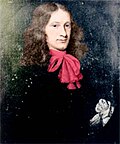| Beekman | |
|---|---|
 | |
| Country | United States |
| Place of origin | Netherlands |
| Connected families | Livingston family Stuyvesant family Van Cortlandt family Bayard family |
| Motto | Mens conscia Recti |
| New Netherland series |
|---|
| Exploration |
| Fortifications: |
| Settlements: |
| The Patroon System |
|
| People of New Netherland |
| Flushing Remonstrance |
 |
The Beekman family (sometimes spelled Beeckman) is a family of Dutch descent that was prominent during the 17th, 18th, and 19th centuries in the area now known as the state of New York. Members of this family played a critical role in the formation of the United States and served as leaders in business, politics and society.







